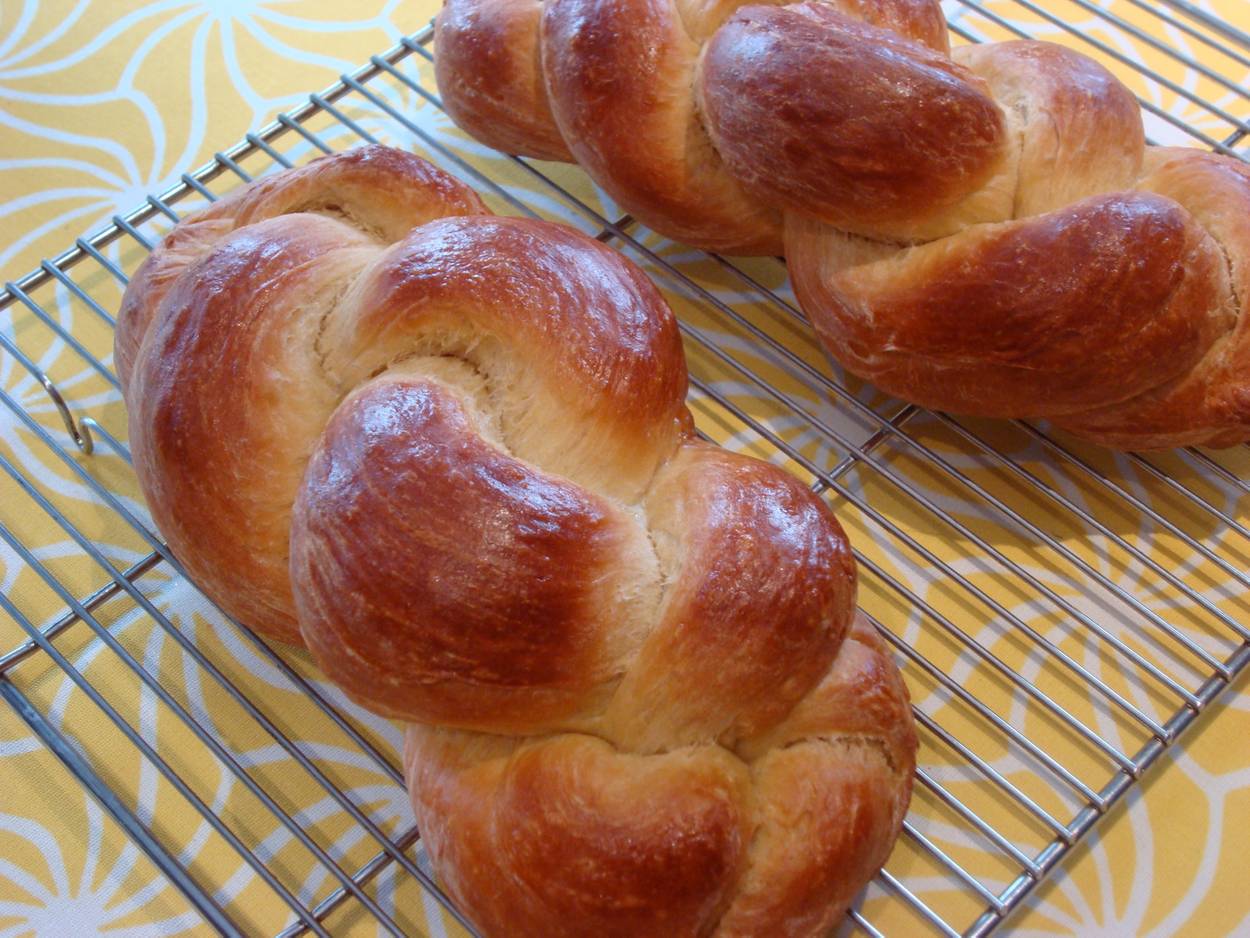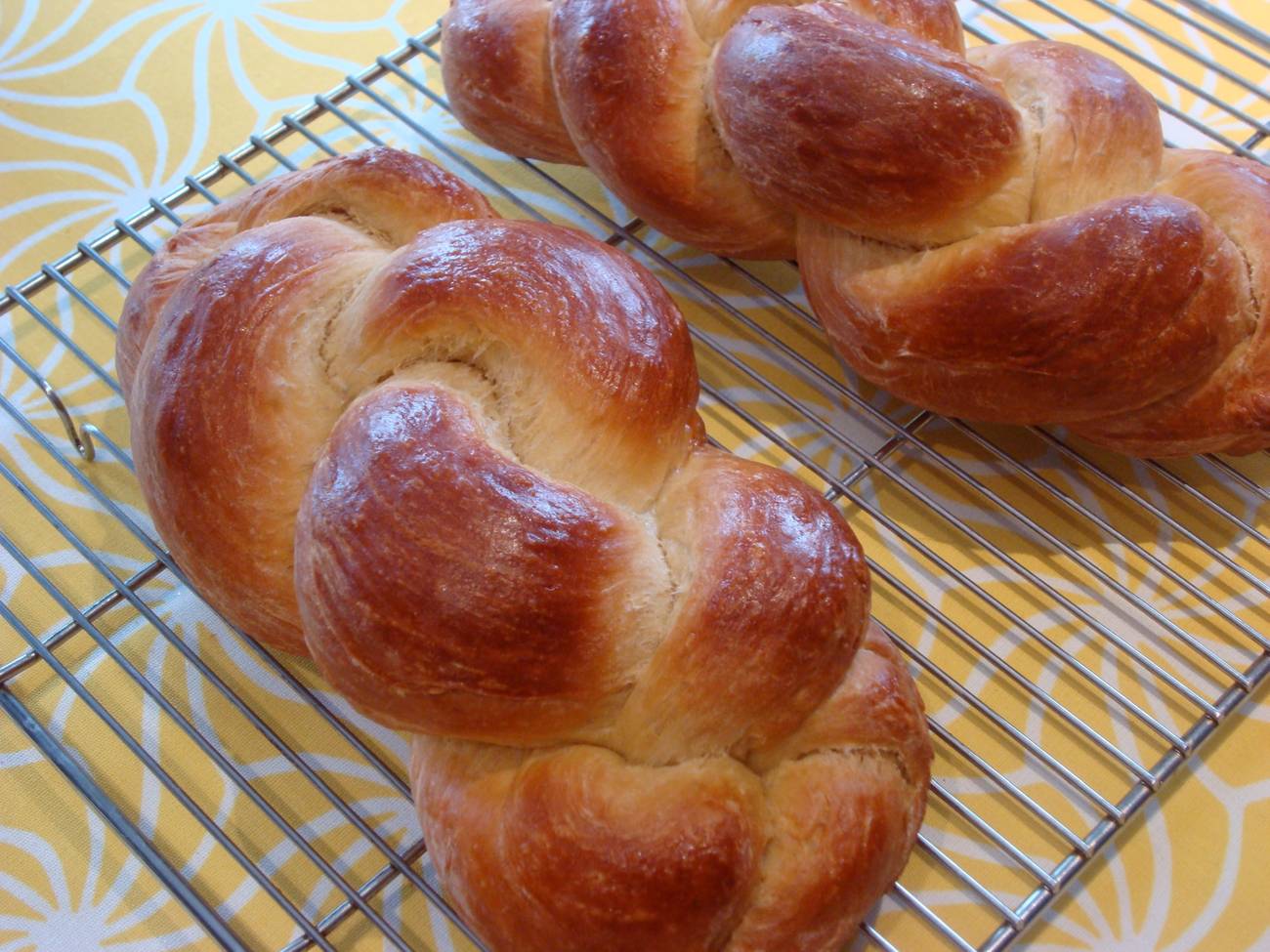Kneading Is Fundamental
Learning to make challah during quarantine




I made my first loaf of challah in early April. It didn’t go well.
I watched a live demonstration on Facebook but had trouble following along. The only flour I’d been able to find was an off-label brand with a weird consistency (my wife would later discover it was gluten-free). I don’t really know how to braid anything, no less these unwieldy strands of dough. The result after 30 minutes of prep, several rises, and another 28 minutes of baking was an ugly clump of twisted, lumpy bread unworthy of Instagram. When I cut into it, it was dense and heavy, its taste a far cry from the spongy and fluffy egg-fueled flavors I remember from my childhood. But I decided to try again anyhow.
I wasn’t alone in my new interest in making bread. Across the globe, aspiring bakers social distancing at home have cranked their ovens up and dusted off their aprons. Images of banana breads, sourdoughs, and other pastries have flooded social media. There was a run on flour and yeast that made the items almost as hard to come by as toilet paper.
Much has been written about how pandemic baking has been motivated by a wish to escape from our digital screens and connect with something tactile and real. My own challah-baking goals were simultaneously less grand and more ambitious: I wanted the feeling you get when you eat the right food at the right time in the right way; that small sense it can give you of order in the chaos, of the puzzles of the universe clicking into place. In short, I was searching for the simple but immeasurable joy of a great piece of bread. And to me there is no greater bread than challah.
Growing up, my family was not religious and did not observe Shabbat or do much beyond celebrating major holidays to honor the noncultural sides of Judaism. But we did do challah.
My mother—an Irish Catholic who married a Jewish man (my dad) but never converted—is an avid bread baker. Using whole grain wheat that she would grind with a small flour-milling machine at our house, she made almost daily loaves as well as items like pancakes and pasta. These whole-grain creations formed the background flavors of my childhood. Best of all, however, was the challah my mom would make each week. Twisted into a beautiful braid, it had a golden glistening crust that reflected the light around it and a soft, fluffy texture that cut through the graininess of the whole wheat flour.
Later in life, when I learned that challah was a Jewish bread, it struck me as odd. To me it has always been like pizza or bagels: a food too good to be enjoyed by just one group of people. But outside 24-hour diners where challah is often available, albeit in varying levels of quality, it remains a specialty ethnic food in most places. I live in Western Connecticut and can’t find it on a regular basis at any bakery close to my house. As a result, I rarely eat challah and have long wanted to make it but haven’t because of time constraints.
Then the pandemic hit.
Even though that first loaf didn’t come out as I had hoped. I tried again the next week. This time I had flour with actual gluten in it. Even so, the bread came out lumpy and ugly, the dough too dense and lacking the lightness a good challah has.
I asked my mom for advice and she said to keep trying. I messaged a professional bread-maker friend and told him of my woes. “It’s easy once you nail down the fundamentals of how dough works,” he assured me. He recommended the book Bread by Jeffrey Hamelman. “Jeffrey Hamelman is like Yoda,” he said.
I tracked down Hamelman’s celebrated, nearly 500-page tome on bread making. “The flour, unable to sustain life on its own, is transformed by the hands of the baker into wondrous bread, nurturing and nourishing,” I read in the preface. “What we hold in our hands, months after the original planting of the seed, is the final resolution of the labor of many: a loaf of bread—ephemeral, fragrant, alive.”
These words and this book inspired me to keep trying. I became intrigued by the lore of this bread. I learned that the word “challah” comes from a reference in the Torah when God tells Moses to set aside a portion of each loaf as an offering, that many observant bakers today continue that tradition taking a small portion of dough and incinerating it in the oven before baking their bread.
The idea of that offering—of making bread as an act of prayer appealed to me in this era of rising death counts and terrible suffering. I realized the yeast I needed to make the bread was an invisible form of life, as strange and as powerful as the virus that had brought the globe to a standstill.
The next time I made challah I used a recipe I found from Molly Yeh. I asked my wife to help read me the ingredients, and double-check what I was doing. She does not make bread, but is much more skilled at baking in general. After mixing the eggs, flour, yeast, and other ingredients together, I started to knead the dough, pushing it and folding it gently on a cutting board. Watching me do this, my wife told me to stop being so gentle, that the dough needed to be pushed together with more force so it would become more elastic. Listening, I put my back into the process and pushed the dough together with the all strength I could muster. I put a small amount of dough aside to honor the tradition of the offering.
I let the bread rise twice and cut and rolled the dough into strands that I wove together into an only slightly malformed braid. I put the loaf in the oven. It was finished about a half hour later.
The warm loaf was golden brown and shiny. I cut off a small piece and bit into it. The bread I’d made wasn’t as good as my mom’s or what you can find at a great bakery, but it was in the same league. The bread had a yellow tinge and was fluffy and flavorful. I needed only one word to describe it: delicious.
Erik Ofgang is senior writer at Connecticut Magazine and co-author of The Good Vices: From Beer to Sex, the Surprising Truth About What’s Actually Good for You. He is also a mentor in Western Connecticut State University’s MFA program.